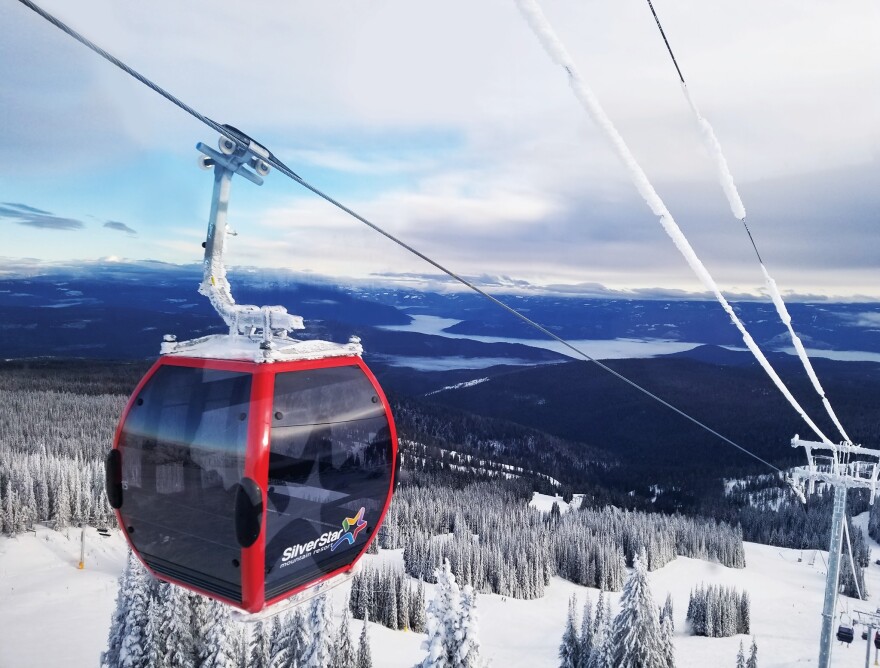With the national conversation hyper-focused on race in America over the past few weeks, the conversation about the ski industry’s role in bringing about real, measurable change has also begun. Although steps are being taken by major players in the industry, many say there is still a lot of work to be done.
In an email sent out to Vail Corp employees on June 2, CEO Robert Katz addressed the issue head-on, stating that they are, bluntly, “part of the problem.”
As one of the largest and most visible employers in Summit County, Vail operates Park City Mountain along with 36 other properties worldwide. Katz said that he has been confronted with the fact that his company and the snow sport industry as a whole is overwhelmingly white, with “incredibly low representation from people of color.”
According to data shared with KPCW by the National Ski Areas Association, of the 59.3 million recorded resort visits during the 2018-19 ski season, only 1.5% — just under 900,000 — were by black skiers and snowboarders.
Although those numbers have grown by about 5% in the last 10 years, the question still remains: how does skiing and snowboarding become a more diverse industry?
Henri Rivers is the President of the National Brotherhood of Skiers, a national nonprofit organization dedicated to increasing participation in winter sports in the black community. NBS’s ultimate goal is to identify, develop, and support athletes of color who will win international and Olympic winter sports competitions representing the United States.
Rivers said that the largest challenge faced by the organization is one of geography, with very few members of the black community living in close proximity to ski areas.
“There is no proximity to mountains," he said. "Most of the time, in our communities, we’re not close to a mountain or that type of area where we could actually engage in snow sports, so traveling is definitely a big issue.”
Kelly Pawlak is the President and CEO of the National Ski Areas Association. She agrees economic and geographic barriers can make it difficult for anyone to enter snow sports. But more importantly, she believes the ability of minority communities to see representations of themselves in marketing and advertising plays a crucial role as well.
“It’s like anything that maybe you have wanted to do," Pawlak said. "If you do some research and nobody looks like you that’s doing it in the photos, in the YouTub videos, or on social media, you’re going to say, ‘ummm, I don’t know.’ That’s what we know is happening in terms of, let’s say you’re a young black girl and you’d like to go skiing. If you’re looking at the photos, if you’re looking at the videos, if you’re looking at the ski area’s social media feeds, if you don’t see anybody like yourself, you may not think that you belong there.”
Rivers agrees that when it comes to marketing skiing and snowboarding to minority communities, there is still a lot of work to be done.
“If you’re going to market to the African American community, have African Americans in your advertising," Rivers added. "If you’re going to market to African American communities, market that ad at African American conferences, go to NAACPs, go to political black caucuses, market your product there.”
In addition, Rivers and the NBS foster a community of black snow sports professionals that aim to not only introduce new people to the sport, but, more importantly, retain their interest for years to come.
“When a young African American person starts skiing, they could be eight, they could be 20," said Rivers. "When they start skiing, when you have a ski instructor that looks like them, your retention rate is going to go higher. If you have an instructor that looks like you, you can identify with that, you’re going to want to come back, you’re going to want to try and improve, and you’re probably going to like the sport. In the NBS, our retention rate with first time skiers is over 70 percent.”
On Monday, Katz announced that Vail will donate a series of grants totaling $3.5 million aimed at addressing the issues of COVID-19 testing, racial justice reform, and programs for urban youth.


